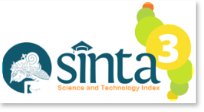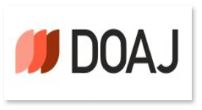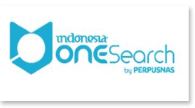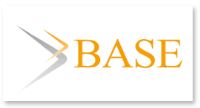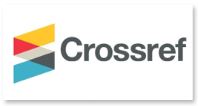UTILIZING EXTREME PROGRAMMING METHODOLOGY FOR DEVELOPING AN ANDROID-BASED SALESMAN VISITATION APPLICATION IN THE WATER TANK INDUSTRY
DOI:
https://doi.org/10.30656/jsii.v10i2.7111Abstract
Integrating technology and industries has opened doors to new possibilities, leading to innovative solutions that reshape traditional practices. The water tank industry is an example that has witnessed significant technological influence as companies seek to optimize production processes, improve product quality, and enhance customer interactions. This article focuses on PT Sanggabuana Berjaya Indonesia (SBI), a company operating in the water tank industry in Indonesia. It discusses challenges related to conventional reporting methods for marketing visits and route determination for their marketing team. Previous studies in similar contexts have successfully addressed similar issues using technology, including GPS-based monitoring for location tracking and the development of mobile applications using the Extreme Programming (XP) model. Considering the relevant literature and interview results with SBI's sales manager, an Android-based monitoring application is proposed as a potential solution. The design process follows the System Development Life Cycle (SDLC) with the Extreme Programming (XP) model, covering planning, design, coding, and testing stages. Due to time and resource constraints, further stages of integration, delivery, retrospective, and continuous improvement are left for future work. This research proves that applying the extreme programming model in designing industry applications is quite relevant. The results of the black box testing tested show that all the features in the application can be used as needed.
Keywords: Android, Extreme Programming, Mobile-application, Salesman, Water-tank.
References
T. A. D. P. Subianto, J. Wiratama, and F. A. Halim, “The Development of web-based Cashier and Inventory Information Systems using Prototyping Model on Micro, Small, and Medium Enterprise (MSMEs) in Indonesia,†JOINS (Journal Inf. Syst., vol. 8, no. 1, pp. 80–89, 2023, doi: 10.33633/joins.v8i1.7983.
T. Mahmood and M. S. Mubarik, “Balancing innovation and exploitation in the fourth industrial revolution: Role of intellectual capital and technology absorptive capacity,†Technol. Forecast. Soc. Change, vol. 160, no. June, p. 120248, 2020, doi: 10.1016/j.techfore.2020.120248.
M. H. Lee et al., “How to respond to the Fourth Industrial Revolution, or the second information technology revolution? Dynamic new combinations between technology, market, and society through open innovation,†J. Open Innov. Technol. Mark. Complex., vol. 4, no. 3, p. 21, 2018, doi: 10.3390/joitmc4030021.
A. Jacob, S. Steimer, N. Stricker, B. Häfner, and G. Lanza, “Integrating product function design, production technology optimization and process equipment planning on the example of hybrid additive manufacturing,†Procedia CIRP, vol. 86, no. March, pp. 222–227, 2020, doi: 10.1016/j.procir.2020.01.013.
Y. Lu, X. Xu, and L. Wang, “Smart manufacturing process and system automation – A critical review of the standards and envisioned scenarios,†J. Manuf. Syst., vol. 56, pp. 312–325, 2020, doi: https://doi.org/10.1016/j.jmsy.2020.06.010.
A. Permana, D. Rahmadi, I. Fakultas, I. Komputer, and U. Kuningan, “MARKETING MENGGUNAKAN PERANGKAT GPS ( Studi Kasus : PD . BPRS Gotong Royong Subang ),†J. Cloud Inf., vol. 1, no. 1, pp. 10–14, 2015.
J. Wiratama, H. Santoso, and Clairence, “Developing a Class Scheduling Mobile Application for Private Campus in Tangerang with the Extreme Programming (XP) Model,†G-Tech J. Teknol. Terap., vol. 7, no. 2, pp. 484–493, 2023, doi: https://doi.org/10.33379/gtech.v7i2.2288.
L. Ariyanti, M. N. D. Satria, and D. Alita, “Sistem Informasi Akademik Dan Administrasi Dengan Metode Extreme Programming Pada Lembaga Kursus Dan Pelatihan,†J. Teknol. dan Sist. Inf., vol. 1, no. 1, pp. 90–96, 2020, doi: 10.33365/jtsi.v1i1.214.
R. Mersita, D. Darwis, and A. Surahman, “Sistem Informasi Pembayaran SPP pada Sekolah di Kecamatan Gedung Tataan dengan Metode Extreme Programming,†J. Ilm. Sist. Inf. Akunt., vol. 2, no. 2, pp. 45–53, 2022, doi: 10.33365/jimasia.v2i2.1872.
K. Beck, Extreme Programming Explained: Embrace Change. Addison-Wesley, 2000. [Online]. Available: https://books.google.co.id/books?id=G8EL4H4vf7UC
J. Wiratama and R. Ikana Desanti, “The Development of Web-based Sales Reporting Information Systems using Rapid Application Development Method,†Ultim. Infosys J. Ilmu Sist. Inf., vol. 13, no. 2, pp. 110–116, 2022.
S. Chandra, R. Sutomo, and J. Wiratama, “Design And Development of Car Sparepart Sales Information System For Web-Based Using RAD Method On UMKM Sinar Seroja,†G-Tech J. Teknol. Terap., vol. 7, no. 2, pp. 494–503, Mar. 2023, doi: 10.33379/gtech.v7i2.2019.
S. Alessandria and B. Kayfitz, Flutter Cookbook: Over 100 proven techniques and solutions for app development with Flutter 2.2 and Dart. Packt Publishing, 2021. [Online]. Available: http://ieeexplore.ieee.org/document/10163215
D. Lohani, Taking Flutter to the Web: Learn how to build cross-platform UIs for web and mobile platforms using Flutter for Web. Packt Publishing, 2022. [Online]. Available: http://ieeexplore.ieee.org/document/10162794
E. Sonalitha, B. Nurdewanto, A. Zubair, S. R. Asriningtias, K. Yudhistiro, and I. Mujahidin, “Blackbox Testing Model Boundary Value Of Mapping Taxonomy Applications and Data Analysis of Art and Artworks,†in 2020 3rd International Seminar on Research of Information Technology and Intelligent Systems (ISRITI), 2020, pp. 7–11. doi: 10.1109/ISRITI51436.2020.9315406.
Downloads
Published
Issue
Section
License
- This work is licensed under a Creative Commons Attribution-ShareAlike 4.0 International License.
-
Author(s)' Warranties
The author warrants that the article is original, written by stated author(s), has not been published before, contains no unlawful statements, does not infringe the rights of others, is subject to copyright that is vested exclusively in the author and free of any third party rights, and that any necessary written permissions to quote from other sources have been obtained by the author(s).
- Information
- Notice about change in the copyright policy of the journal 'Jurnal Sistem Informasi (JSiI)' : "From Vol 1, onwards the copyright of the article published in the journal 'Jurnal Sistem Informasi' will be retained by the author"












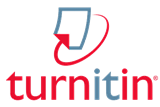
.jpg)

